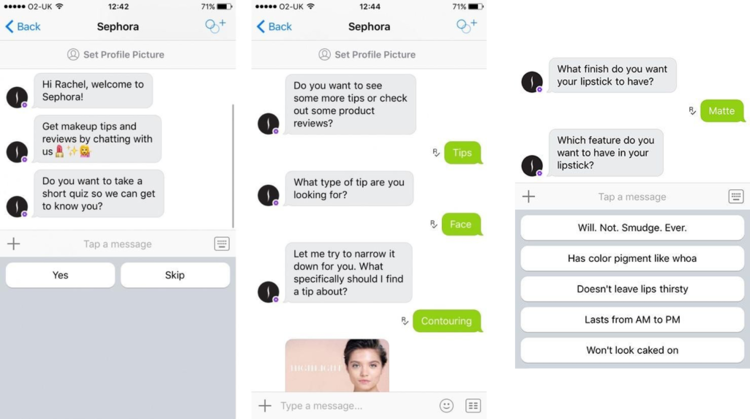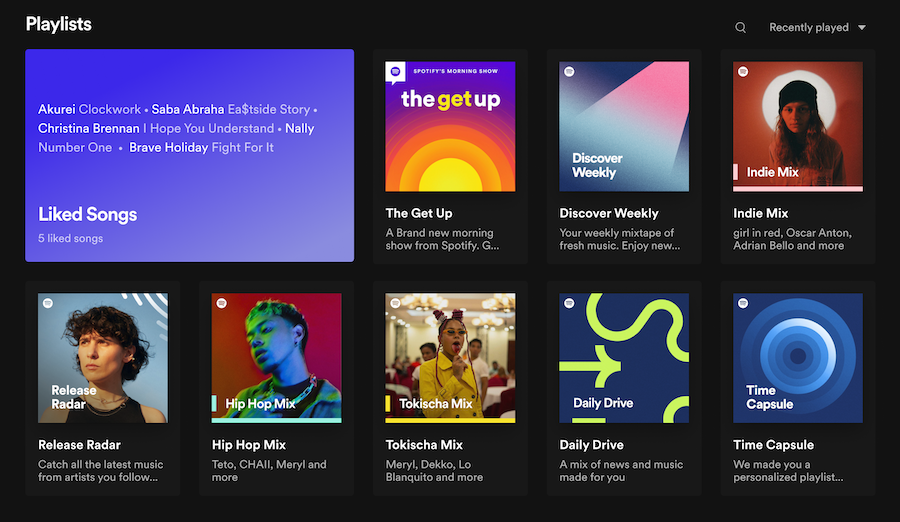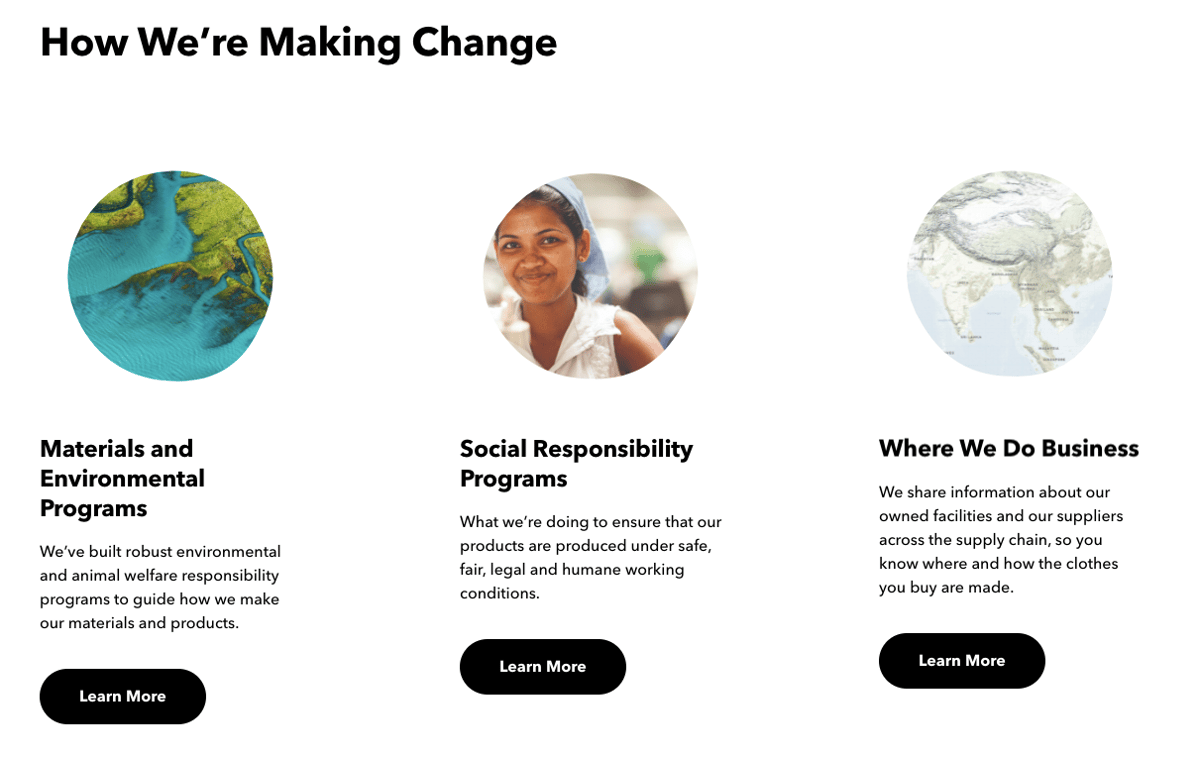Marketing is very similar to a chameleon. It keeps changing and evolving. It’s up to you as a business to stay abreast of the future of marketing and keep adapting to the evolving trends and tech.
Today, that means brands need to be more authentic, personalize their messages, and stay flexible to keep up with the ever-evolving demands of consumers.
Whether it's through immersive experiences, voice search, or conversational marketing, the goal remains the same: to create meaningful connections with customers.
In this article, we’ll talk about the evolving marketing trends, see what other businesses are doing to stay ahead of the curve, and show you how to keep up with the change.
Broad strokes: Where are we seeing the most evolution?
- Immersive experiences: At the forefront of the evolution in marketing are immersive experiences. These are interactive and lifelike experiences created using technology, including virtual reality and augmented reality (more on this later).
- Omnichannel strategy: With a gazillion ways of online communication at our disposal, we’re living in a truly hyper-connected society. Consumers also interact with brands across various platforms, from social media to physical stores. Considering this, businesses are gradually adopting an omnichannel approach to offer a seamless customer experience, regardless of the channel. For instance, a retailer might allow customers to browse products online, try them in-store, and then complete the purchase via a mobile app. For B2B SaaS businesses, implementing an omnichannel strategy could involve providing clients with consistent support whether they reach out via LinkedIn, email, or a dedicated client portal.
- Data-driven personalization: Data-driven personalization is also transforming the marketing landscape. With the vast data available, businesses can personalize their campaigns based on their customers' preferences. This level of personalization is becoming the norm, with consumers expecting brands to understand their needs and provide relevant recommendations. And businesses that personalize their marketing campaigns experience a 10% to 15% increase in revenue.
- Brand marketing: This trend has existed since the beginning of marketing. It involves building and promoting a brand's identity, values, and unique selling points to increase customer connection. For instance, successful brand marketing, like Coca-Cola's "Share a Coke" campaign or Nike's "Just Do It" slogan, made these brands a household name by creating a lasting impression on their customers.
Future of marketing: Trends & Tech
Virtual reality & augmented reality to create engaging & interactive experiences
Imagine walking through a virtual store from your living room or trying on clothes without touching a physical garment.
Or strapping on a headset and being transported to a concert.
Or test-driving a new car.
Remember, you’re doing all of this from your living room.
That’s Virtual Reality (VR) for you. VR transports users into a wholly digital environment, offering a 360-degree sensory experience.
It’s all the rage right now, especially with the new sensation in the tech world: Apple’s Vision Pro. But the concept isn’t completely new.
Back in 2015, Tommy Hilfiger brought their fashion shows to life with VR headsets in stores, allowing customers to feel like they were front row at New York Fashion Week.
Tommy Hilfiger in-store virtual reality experience (Image Source)

Tommy Hilfiger in-store virtual reality experience (Image Source)
On the other hand, augmented reality (AR) adds digital overlays to your surroundings in the real world. Remember the Pokémon GO craze? That's AR in action. But it's not just for catching virtual creatures.
Brands like IKEA use AR to let customers visualize how furniture would look at a specific spot in their homes before making a purchase. L'Oreal allows users to try on makeup virtually with their AR app, making online shopping a breeze.

IKEA’s AR app helps their customers virtually place furniture at home (Image Source)
It’s not just a passing trend. According to Statista, the AR and VR market is projected to generate revenue of $38.6 billion in 2024.
More and more brands are adopting VR and AR to keep up with the competition and make the shopping experience convenient, interactive, and memorable for their customers.
Voice search optimization to reach customers where they ask
The future of marketing is not just about what we see—it's about what we say. As we increasingly turn to virtual assistants like Amazon's Alexa, Google Assistant, and Apple's Siri, voice search is becoming a game-changer.
It's the convenience of asking your device a question and getting an immediate answer. No typing, no scrolling, just talking.
Brands are going out of their way to integrate voice search into their marketing strategies to provide seamless customer experiences.
For instance, all your favorite pizza chains — from Domino's to Papa John's — allow you to order your favorite pizza through Siri.
Not just that, more than half of consumers on the internet are using voice search to find local businesses like "best sushi near me" or "dentist open on Sunday."
The increasing popularity of voice search poses an opportunity for brands to create more engaging, human-centric interactions. Imagine asking your virtual assistant for a recipe, and it not only provides the steps but also suggests products from your favorite grocery brand.
Delivering a personalized experience with chatbots & smart assistants
Chatbots and smart assistants are like your helpful friends at the party, ready to answer questions, personalize experiences, and even crack a joke (hopefully a good one).
In the online marketing context, they’re valuable lead-generation machines. The moment potential customers visit your website, the virtual assistant is ready to help them navigate, make recommendations, or even complete a purchase.
For example, Sephora, a leading cosmetic platform, revolutionized chatbots and smart assistants in the beauty industry. Their chatbots are like personal beauty advisors, giving tips and suggesting products that suit the customer’s style while making their online shopping experience more fun and personalized.

Sephora's interactive chatbot example (Image Source)
Smart assistants — which are often integrated into devices like smartphones and smart speakers — are the next level of chatbots. They can perform a range of tasks, from setting reminders to controlling smart home devices.
Amazon's Alexa, Google Assistant, and Apple's Siri are leading the charge, becoming household names in the process.
A report by Grand View Research found that the global chatbot market size might reach $1.25 billion by 2025, with a compound annual growth rate of 24.3%.
What makes these chatbots and smart assistants so sought after?
- 24/7 service, no sleep required. Unlike human customer service reps who need, you know, sleep and vacations, chatbots are always on duty.
- They offer personalized experiences. Chatbots and smart assistants can analyze past interactions, purchase history, and even current browsing behavior to recommend products, offer discounts, and tailor the experience to each individual.
- It's not just about talking. It's about buying. Forget filling out endless forms — chatbots and smart assistants can handle purchases directly within the conversation.
- They collect data. Chatbots and smart assistants collect valuable data on user preferences, buying habits, and even sentiment. This data goldmine helps brands understand their customers better, personalize marketing campaigns, and improve product offerings.
Leveraging AI for hyper-personalization and targeting
Once upon a time, personalization meant inserting a first name into an email. Fast forward to today, and it's a whole new ball game.
Brands are utilizing Artificial Intelligence (AI) and machine learning to analyze behavior, predict needs, and deliver content that makes customers feel like it’s made just for them.
Netflix's recommendation engine is a prime example, curating watch lists based on your viewing history.
Another name that comes to mind is Spotify. The music streaming giant takes your listening habits and turns them into personalized playlists—like the Discover Weekly, the Daily Drive, or Year in Review—making every user feel like they have their own personal DJ.

Spotify's deep personalization example (Image Source)
To take things further with hyper-personalization, businesses are also turning to account-based marketing, which involves targeting specific high-value leads with tailored messages and offers.
Building trust & transparency to earn customer loyalty
Remember the Facebook privacy scandal of 2018? That was a wake-up call for brands.
Consumers are increasingly concerned about how their data is collected and used. Brands that are transparent about their data practices and give users control over their information are winning hearts (and minds).
For example, Apple's "App Tracking Transparency" feature gives users the option to opt out of being tracked by apps. This commitment to user privacy has been praised by consumers and industry experts alike.
Aside from data tracking, new-age customers are also looking for ethical brands that align with their values. According to a new poll of 2,000 US young adults, when shopping, 51% of participants claimed that they prioritize eco-friendly brands, while 49% look for brands that use naturally sourced ingredients. Nearly 44% of participants also prefer brands with a strong social media presence.
Brands like Patagonia are taking charge by giving explicit information about their ethical manufacturing process and focusing on environmental sustainability.

Patagonia's environment and footprint information (Image Source)
Finding your footing: Creating a future-proof marketing strategy
Whether it’s a startup with a small marketing team or an international enterprise, everyone has the challenge of staying relevant and keeping up with the ever-evolving marketing trends.
That’s why you need to create a future-proof marketing strategy. Here’s how you can go about it:
Embrace technology
The future of marketing is intertwined with technology. Brands like Nike and Adidas are leading the charge, leveraging augmented reality to enhance the shopping experience.
How will you keep up with the latest trends? Here are some quick tips:
- Leverage AI for personalization. Use AI to analyze customer data and deliver personalized content and recommendations. Tools like Adobe Sensei or Salesforce Einstein can help you create more targeted and relevant experiences.
- Optimize for voice search. People are always on the go, which has led to the rise of voice assistants and smart speakers. This trend subsequently led to a rise in voice search. To increase your outreach, make sure you optimize your content for voice queries by focusing on natural language and question-based keywords.
- Use Augmented Reality for product visualization. Consider developing an AR app or integrating AR features into your existing app, similar to IKEA's Place app.
- Invest in video marketing: Video content is more engaging and shareable than text. Use platforms like YouTube or TikTok to create videos for marketing success by showcasing your products, telling your brand story, or providing brand-related information.
- Use tools like Keyword API. This way, you’ll stay informed about trending keywords and topics to optimize your content for search engines and voice assistants.
This is just the tip of the iceberg. Keep an eye on emerging tech trends and assess their relevance to your business to stay ahead of the game.
Adopt an omnichannel approach
The customer journey is no longer linear. Users now use multiple channels to interact with brands, both online and offline. An omnichannel strategy helps you meet your customers where they are, allowing you to offer them a seamless and consistent experience across all touchpoints.
A unique example of an omnichannel experience comes from luxury fashion brand Burberry. In their flagship stores, Burberry uses RFID (Radio-Frequency Identification) tags embedded in their products.

Burberry's omnichannel experience (Image Source)
When customers pick up an item, nearby screens display its craftsmanship details, personalized recommendations, and runway appearances, creating a seamless checkout process and connection between online and offline shopping.
Stay agile & adaptable
The only constant in marketing is change. The ability to adapt quickly to market shifts and consumer trends is crucial for long-term success.
Netflix's transition from a DVD rental service to a streaming giant is a testament to the power of adaptability. If you keep a pulse on industry trends and are always ready to pivot your strategy, you’ll likely stay ahead in the game.
Use conversational marketing
Merely publishing blog posts or sending out emails without complementing them with other forms of marketing is a content marketing mistake. Gone are the days when brands could solely rely on content marketing to engage their customers.
Customers are more keen on one-on-one interactions today. Enter conversational marketing — which is all about engaging with customers through real-time, one-on-one interactions, typically using chatbots, messaging apps, or live chat.
No wonder the worldwide chatbot market is slated to reach $454.8 million in revenue by 2027. This is up from $40.9 million in 2018.
Establish yourself as a strong brand
Establishing yourself as a strong brand is no longer just about having great products or services. It's about creating an interactive and memorable experience that resonates with your customers.
88% of customers now say the experience a company provides is as important as its products or services—the highest it's ever been.
How will you build a strong, memorable brand? Here are some quick tips:
- Define your unique selling proposition (USP). Craft a brand slogan or value proposition that clearly tells your target audience what sets you apart.
- Be consistent. Your brand messaging, visuals, and tone should be consistent across all channels, including influencer marketing efforts, ensuring that every touchpoint resonates with your core values. Take Apple, for example. Their consistent messaging and customer experience have helped them amass a legion of loyal fans and brand advocates. People don't just buy Apple products for their features—they buy them because they love the brand itself.
- Engage with your audience. Build a community around your brand by actively engaging with customers on social media and other platforms.
- Narrate your story. Weave in a story around your brand by talking about your values, goals, and mission.
- Deliver exceptional customer service. Positive customer experiences can turn satisfied customers into brand advocates. From in-app guidance to using data to offer personalized offers and recommendations, discover new ways to entice your audience and keep them returning to your brand.
Navigating the future of marketing
The future of marketing is about embracing immersive experiences, adopting omnichannel strategies, leveraging data for personalization, and maintaining brand authenticity. Technologies like VR, AR, voice search, chatbots and AI marketing tools are transforming how brands connect with consumers. As marketers, staying agile and adapting to these evolving trends is crucial for success.
For those looking to keep abreast of the evolving future of marketing, MentorCruise offers a valuable resource. It's a platform where you can find experienced marketing mentors to guide you through modern marketing strategies. Whether you're seeking the latest marketing trends or how to scale your marketing efforts, MentorCruise has something for everyone.


